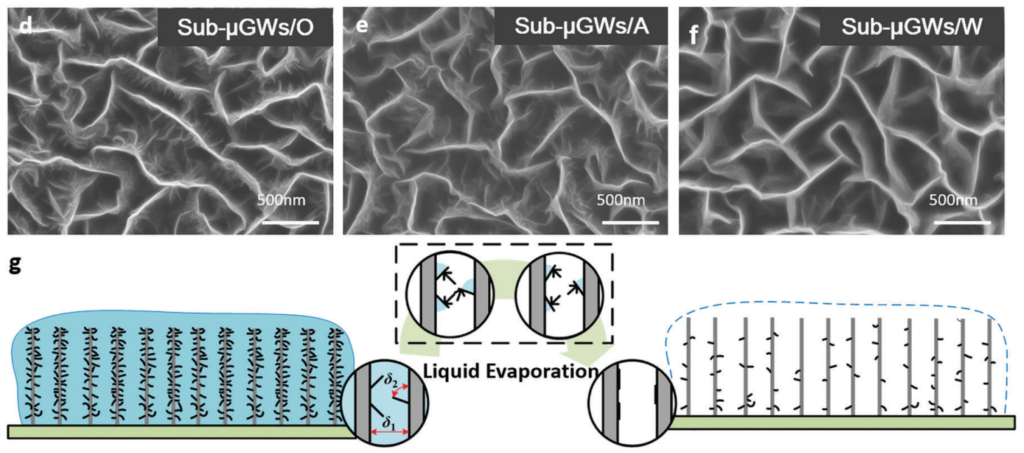The sustainability issues of efficient energy storage and water purification are of vital importance to the long-term future of the planet. Researchers from Zhejiang University have developed a new nanostructured graphene material with a tuneable surface texture which can be used to for enhanced water purification and energy storage applications.
Inspired by the hierarchical structures and microscopic surface textures of the dry-climate plant Callitris endlicheri, the graphene structures use capillary effects to transport and store water in a similar way, but at much smaller length scales. Typically, tuneable surfaces such as these, require chemical surface modifications; but this Nanoscale Horizons article outlines a new method involving plasma-assisted growth of graphene ‘nano-flaps’ covalently bonded to micro-sized vertical grapheme graphene wells (termed ‘Sub-μGW’). The surfaces showed better water purification of metal nanoparticles from water and remarkable electrochemical performance in supercapacitors (2.5x higher specific capacitance of Sub-μGW electrodes). These excellent properties are attributed to enhanced solid-liquid interfacing leading to a super hydrophilic surface by reduction of air bubbles, and better device performance.
In the future, this biomimetic approach could be used to control the wettability of a range of porous microstructured surfaces, and could lead to further breakthroughs in important areas such as energy storage and conversion, water purification, and biomedical devices.

Fig. 1. SEM images of grapheme nanostructures showing the decreasing nanotexture densities from (d) to (f). (g) Schematic of the capillarity driven modification process for the adjustment of the nanotexture density in Sub-mGWs.
Read the article:
Tuneable fluidics within graphene nanogaps for water purification and energy storage
Zheng Bo, Yilei Tian, Zhao Jun Han, Shenghao Wu, Shuo Zhang, Jianhua Yan, Kefa Cena and Kostya Ostrikov
Nanoscale Horizons, 2017, Advance Article, DOI: 10.1039/C6NH00167J
Alexander Cook is a guest web writer for the RSC journal blogs. He is a PhD researcher in the Perrier group at the University of Warwick, focusing on polymer materials and their use in various applications. Follow him on twitter @alexcook222










